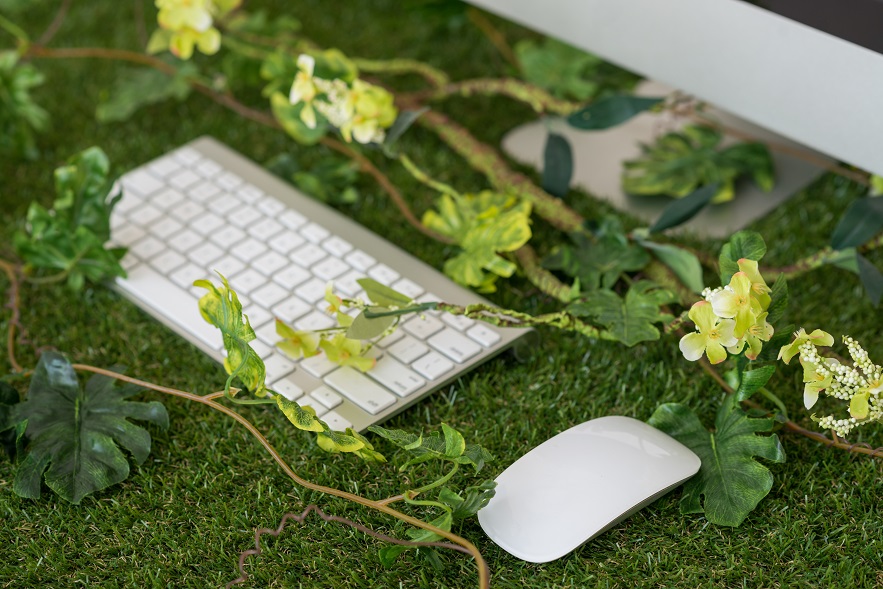Tim Hanwell of Officeworks reimagines the office through biophilic design to aid in reducing stress and maximising productivity levels.
At Officeworks we firmly believe that employers should be embracing a design approach that puts the wellbeing of office workers at its core. Biophilic design can reduce stress, improve cognitive function and creativity and improve our wellbeing. Given that businesses waste millions of pounds each year on lost productivity due to stress-related illnesses, design that reconnects us with nature – biophilic design – is essential for providing people opportunities to live and work in healthy places and spaces with less stress and greater overall health and wellbeing.
What is Biophilia?
The word biophilia was first used by social psychologist Erich Fromm (The Heart of Man) in 1964. He described it as “the passionate love of life and all that is alive.” The concept was then popularised by biologist Edward O. Wilson in his book Biophila in 1984, in which he describes the innate relationship between humans and nature.
With the emergence of the green building movement in the early 1990s, links were made between improved environmental quality and worker productivity (Browning and Romm,1994). While the financial gains due to productivity improvements were considered significant, productivity was identified as a placeholder for health and wellbeing, which have an even broader impact.
The healing power of a connection with nature was established by Roger Ulrich’s landmark study comparing recovery rates of patients with and without a view to nature, which concluded that having a window looking out onto plants speeded up the healing process of patients in hospitals. Similarly, having plants in the same room as patients in hospitals also speeds up their healing process.
The last decade has seen a steady growth in work around the intersections of neuroscience and architecture, both in research and in practice; even green building standards have begun to incorporate biophilia, predominantly for its contribution to indoor environmental quality and connection to place.
Most recently, biophilic design has been recognised as a complementary strategy for addressing workplace stress, student performance, patient recovery, community cohesiveness and other familiar challenges to health and overall wellbeing.
With today’s focus on health and wellbeing both at home and in the office it has never been more important to design spaces that inspire, energise and support the people who use them.
How biophilic design is beneficial
Psychologist Dr Chris Knight from Exeter University led a study which found that simply adding houseplants to sparse offices increased staff productivity by 15%.
A global study into the impact of office design by virtual campaign forum Human Spaces has revealed the full extent of the benefits offered to workers by offices that incorporate natural elements. The study of 7,600 workers in 16 countries found that those working in offices with natural light, good ventilation and plants reported a 15% higher level of wellbeing and a 6% productivity increase. They also found that staff were more likely to feel happy and inspired and less likely to feel bored or anxious when entering a biophilic workplace.
Importantly, the report found that office design was so important to workers that a third (33%) of respondents said that it would unequivocally affect their decision whether or not to work somewhere.
So how does this translate into tangible benefits?
Improved Productivity: This can be attributed to a variety of factors including but not limited to better air quality, greater sense of wellbeing, improved concentration levels (see below) and/or a greater choice of work settings, including outdoor areas.
Increased concentration levels: Plant life in the workplace can vary from a selection of potted plants dotted throughout to elaborate living walls, but the end result is the same – they increase oxygen levels in the workplace which in turn, decreases mental fatigue and increases concentration levels, and some would argue, overall productivity.
Creativity blossoms: A more stimulating workplace allows creativity to flourish, and can be nurtured through the inclusion of features like artwork, wall art and graphics, but also simple improvements like access to natural light (and views of the outdoors), incorporating colour and including natural finishes can also have a positive impact.
Enhanced staff wellbeing: All of the above factors play their part in enhancing staff wellbeing, which can have a real tangible impact on the bottom line as absenteeism falls and staff productivity and output increases.
Greater staff retention: As staff wellbeing levels increases, so too does staff retention which is a key concern for many, if not all companies. Recruitment costs coupled with lost output as new staff members get trained can be substantial. Biophilic office design can help to engage staff and to provide them with a workplace where they enjoy being, and hence don’t want to leave.
What does a biophilic office look like?
Biophilic design is more than a ‘nice to have’. The use of nature to harness employees’ full potential is becoming an essential aspect of modern, progressive office space. Businesses investing heavily in the approach include Apple with Campus 2 and Google’s Dublin Campus.
As well as good natural light levels, an office design that incorporates elements of the natural world might also have views onto nature, natural textures, organic materials and naturalistic colours plus recuperation spaces to restore mental and physical energy.
How do you actually utilise biophilic design for your office? Here are the three main principles, with some examples for each.
Nature in the space
This is about bringing actual nature into the building. For example:
- Pot plants on desks
- Living green walls
- Water features
- Fresh air circulation
- Natural light
- Window views to trees, landscapes or water
- Sound of birdsong or water
- Fish in aquariums
Nature of the space
- Cosy, private workspaces like small rooms or sheltered nooks
- Open-plan collaboration spaces
- Balconies and atriums with views from a height
Natural elements
- Wood, stone or slate finishes
- Artwork depicting plants, animals, landscapes
- Shades of green, blue, yellow and brown
- Floral patterns
- Circular shapes and curved lines
If you have the opportunity to design your ideal office from scratch or undergo a major renovation, you’ll be able to utilise all of these ideas. But we know most business people are working within a more limited environment.
Even if you’re just renting a small office within a commercial unit you can’t control, you can still employ some biophilic design. For example, you could add a potted plant on every desk, put up prints of nature photography on the walls and arrange the furniture in a way that creates partially enclosed private workstations in the corners and a collaborative ‘break-out’ area in the centre.
Want to improve well being for your DSE users and manage their risks more effectively? Check out our DSE E-Learning and risk management software here.




